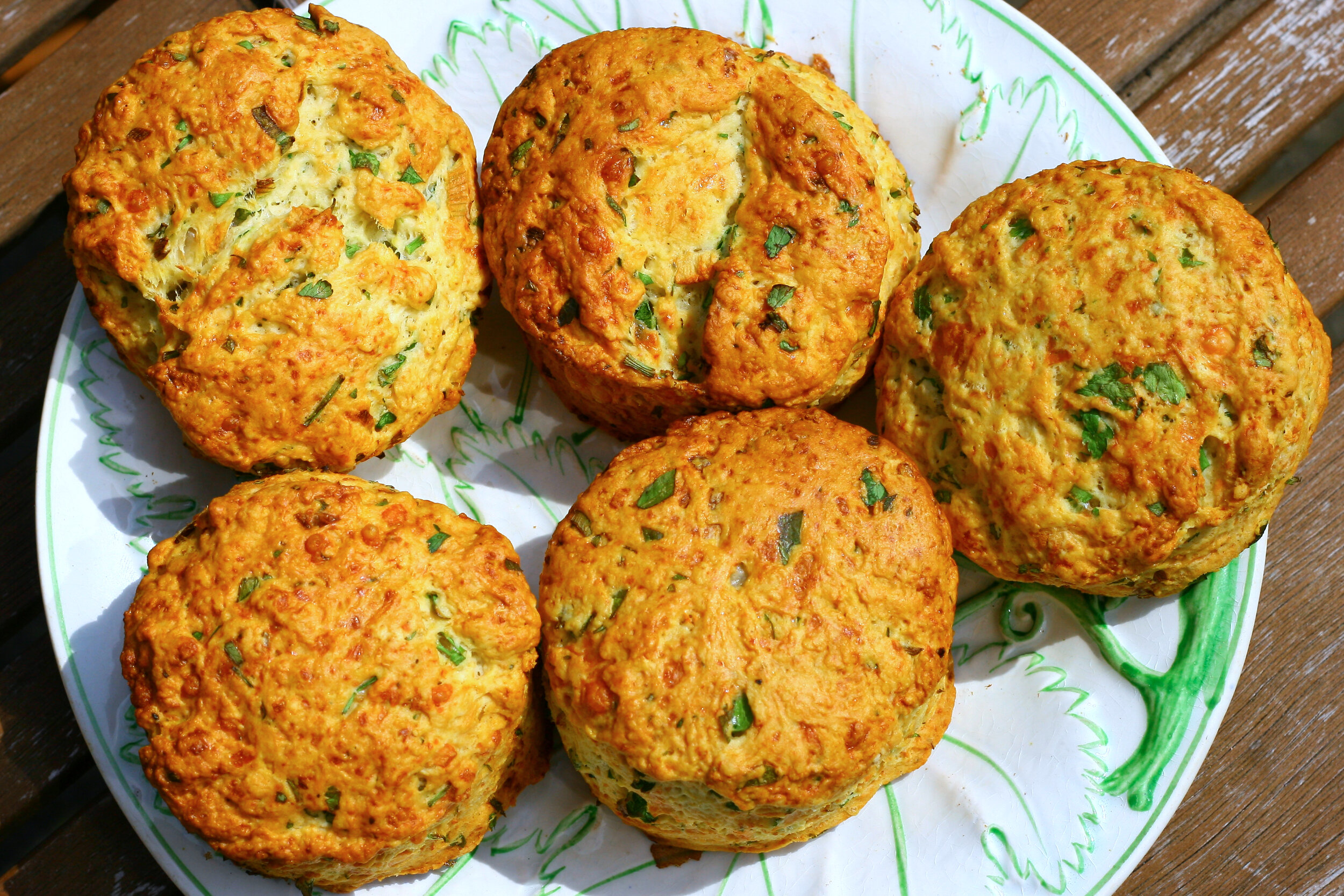Garlic bread scones




No, the world does not need another scone recipe. Yes, it's 200:50:120 and minimal kneading.
Here's mine anyway, because garlic.
The idea is to get that rich, buttery-herby aroma of fresh garlic bread into a scone. There’s a little cheese too, for umami and to give the flavour some backbone. Try them spread with a little cream cheese for brunch, and do not get stingy with the garlic.
Ingredients:
Lot of recipes out there, lot of ratios.
Self-raising flour, 225g
Milk, 120ml
Butter, 50g (you can use a firm baking margarine)
Cheddar, 25g
Parmesan, about 1tbsp when grated
Garlic, 3-4 cloves
Chives, about 15g
Flat leaf parsley, about 20g
Baking powder, 1tsp
Mustard powder, 1tsp
Salt, 1/2tsp
You'll need a 6cm or so cookie cutter, or something about that size you can cut around with a knife. A jar lid maybe, or the saucer for those cute little espresso cups your aunt bought you but you never use because really, who needs a saucer for espresso.
If you like your scones richer and a little more cakey, instead of the liquid quantity here, break an egg into a measuring jug, and top the volume up to 120ml with milk or cream, then beat it together.
Instructions:
Two key things here are not to overwork the dough, and to go fairly quickly once the liquid is added. These both contribute to a good rise and a fluffy texture. Working the dough builds gluten, that elastic little bastard that makes bread awesome but impedes the rising here. We go quickly because the rising agent starts working as soon as the liquid hits. I mean don't rush - it's only scones after all. But also don't, y'know, take a sherry break between mixing and baking.
Grate the cheese. Crush the garlic to a fine paste. Finely chop the herbs. Measure everything else out so it's convenient.
Heat the oven to 200c
In either a food processor or a big bowl, mix the flour, baking powder, mustard powder, salt, and butter together. You want to get that sandy, breadcrumb-ish consistency that means the fat has thoroughly coated the flour and there are no floury lumps. This will either be a few blitzes with the mixer or "rubbing in" with your fingers.
Mix in the cheese.
Add the liquid, garlic, and herbs, and gently work it all together into a ball of dough. I use a table knife with a cutting and mixing motion rather than a vigorous stir. This - as discussed - is because we're looking to work the dough as little as possible while getting it to come together. You can do this part in the food processor too, so long as you're careful and don't overwork it. The herbs might get chopped through to a paste though, making the whole thing green.
As soon as the dough has come together into ball, turn it out onto a lightly-floured surface and smoosh it into shape.
That's right. Smoosh.
Do not knead this fucker. Gluten is not your friend on scone day.
Gently press the dough out 2-3 cm thick, and using a 6cm or so cutter, cut out as many as you can. Probably 3; 4 if you're tidy. I'm not.
Smoosh the offcuts back together (Gently. You don't gotta work, bitch) and repeat the cutting. You're aiming for 6. You might get 5. I typically get 6 and a small one.
Put them on a baking tray, quickly brush with egg wash or milk, and get them into the oven fast, to make the most of the rising agent and get them nice and fluffy.
Bake for about 15 minutes, until golden and well risen.
Mine took 18 minutes in these pictures.
You may also spot that there are 5 an not 6. I picked up the wrong pastry cutter and could not be bothered doing it again.
Eat them warm, with just some cream cheese or a plate of antipasti bits and pickles. You won’t regret it.